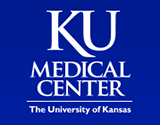Engaging Diverse Underserved Communities to Bridge the Mammography Divide
| Status: | Completed |
|---|---|
| Conditions: | Breast Cancer, Cancer |
| Therapuetic Areas: | Oncology |
| Healthy: | No |
| Age Range: | 40 - Any |
| Updated: | 4/21/2016 |
| Start Date: | September 2010 |
| End Date: | August 2015 |
Breast cancer is the second most common cause of cancer death in the U.S.1 in spite of being
preventable, easily detectable, and curable.2-11 Breast screening continues to be
underutilized by the general population and especially by traditionally underserved minority
populations. Two of the least screened minority groups are American Indians/Alaska Natives
(AI/AN) and Latinas. American Indian/Alaska Native women have the poorest recorded 5-year
cancer survival rates of any ethnic group and the lowest (or near-lowest) screening rates
for major cancers.12 Furthermore, breast cancer is the number one cause of cancer mortality
among Latina women.13 While breast cancer screening rates have increased nationally, there
has been an increase in the gap in breast cancer screening utilization between individuals
from minority versus majority racial/ethnic groups.
preventable, easily detectable, and curable.2-11 Breast screening continues to be
underutilized by the general population and especially by traditionally underserved minority
populations. Two of the least screened minority groups are American Indians/Alaska Natives
(AI/AN) and Latinas. American Indian/Alaska Native women have the poorest recorded 5-year
cancer survival rates of any ethnic group and the lowest (or near-lowest) screening rates
for major cancers.12 Furthermore, breast cancer is the number one cause of cancer mortality
among Latina women.13 While breast cancer screening rates have increased nationally, there
has been an increase in the gap in breast cancer screening utilization between individuals
from minority versus majority racial/ethnic groups.
If you decide to participate in the program, your participation will last 4 months. You will
complete the Healthy Living Kansas-Breast Health survey by computer. The survey will take
about 20 minutes to complete. You will be randomly assigned (like flipping a coin) to one of
two groups. The groups will receive different breast health information. After completing
the survey, you agree to be contacted by telephone in 4 months to answer questions. You will
be asked for your name, home address, and phone number.
You will be given information about breast cancer and mammography. You may or may not
benefit from the information provided. Care will be taken to safeguard the information you
provide but under rare circumstances confidentiality breaches may occur.
complete the Healthy Living Kansas-Breast Health survey by computer. The survey will take
about 20 minutes to complete. You will be randomly assigned (like flipping a coin) to one of
two groups. The groups will receive different breast health information. After completing
the survey, you agree to be contacted by telephone in 4 months to answer questions. You will
be asked for your name, home address, and phone number.
You will be given information about breast cancer and mammography. You may or may not
benefit from the information provided. Care will be taken to safeguard the information you
provide but under rare circumstances confidentiality breaches may occur.
Inclusion Criteria:
- Latina or AI/AN woman residing in one of participating communities
- Aged ≥40 years of age
- Not up to date on mammography screening
- Home address & access to a working telephone
- Responded to 120-day post randomization follow-up call
Exclusion Criteria:
- Receipt of mammogram within past year
- Acute medical illness, history of breast cancer, 1st
- Cognitive impairment or inappropriate affect or behavior
- Another household member enrolled in the study
We found this trial at
1
site
University of Kansas Medical Center The University of Kansas Medical Center serves Kansas through excellence...
Click here to add this to my saved trials
